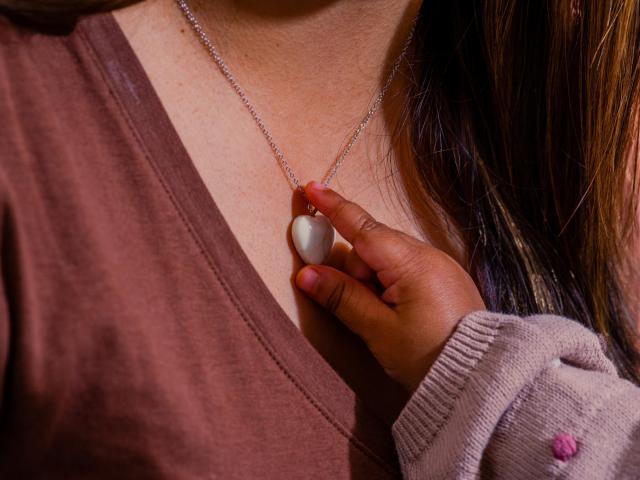Alma Partida knew her breastfeeding journey would end in June. She had breastfed her daughter, Alessa, for almost 18 months – longer than most mothers in the United States – and the process had not been easy.
First there was the birth of Alessa, by emergency cesarean, in February 2020. In the hospital after an operation, Partida had difficulty breastfeeding. Once she and her daughter were discharged, breastfeeding was still difficult.
“It was a really long trip,” said Partida, a 29-year-old speech therapist in Watsonville, Calif.
Now that that was over, she wanted to find a way to mark him.
While browsing the posts of a parental Facebook group, Partida came across an unusual but appropriate souvenir: a pendant containing a white stone. The main ingredient? Breastmilk.
She knew she had to have one.
This may be the first time you’ve heard of breast milk jewelry, a niche in the memorial market. But there are plenty of precedents for knick-knacks and wearable items that contain organic material. Human hair earrings and brooches were popular during the Victorian era. More recently, synthetic diamonds have been made from cremation ashes. It is also common for parents to keep the umbilical cord and baby teeth.
For her own piece, Partida shipped around 10 milliliters of breast milk to a company called Keepsakes by Grace. About a month later, she received a milky white heart pendant in the mail.
“It’s the last straw,” Partida said. “This is the last thing you have to remember on the trip. “
New York lactation consultant Freda Rosenfeld said she understood the urge to commemorate the experience.
“For many people, breastfeeding is an extremely special and important time in their lives,” said Rosenfeld. “A lot of times when they wean themselves it’s a little sad, because it was such a special time.”
Sarah Castillo, owner of Keepsakes by Grace, said her customers often bought her parts after struggling to breastfeed.
“A lot of my orders come from customers who are going through a rough patch or who are going through withdrawal and not yet ready,” said Castillo, 25, who lives in Tucson, Arizona. “A lot of it comes from that, almost as a desire to keep going, but either they can’t or they’ve decided it is time to quit.”
Castillo launched his line in March after seeing similar products on Instagram. She experimented with her own breast milk for months, before stumbling upon a method that involves dehydrating the solution to make a powder, then mixing the powder with resin to make a stone. Its parts typically cost between $ 60 and $ 150.
“Jewelry is already really sentimental,” Castillo said, but in the case of jewelry made from breast milk, “it literally contains a memory.”
Ann Marie Sharoupim, founder of Mamma’s Liquid Love, said her customers have similar motivations when they buy her breast milk jewelry. Sharoupim, 34, who has a doctorate in pharmacy and lives in Rutherford, New Jersey, sells earrings, necklaces, bracelets and rings with breast milk stones. They are $ 90 to $ 1,500. This year, she says, she sold nearly 4,000 pieces.
“People want jewelry that has meaning now,” Sharoupim said.
She recommends that buyers treat their jewelry like a pearl, taking care to keep it dry and limiting its exposure to chemicals. After a customer places an order on their website, Sharoupim sends instructions on the best way to send half an ounce of breast milk to the company.
For some parents, jewelry made from breast milk can also be a way to cope with loss.
Rebecca Zuick, 31, a software development student in San Antonio, purchased a ring with a stone made from her breast milk in February 2017, both to celebrate the end of breastfeeding for her son, Asher, and to cope with the stillbirth she experienced in July 2015.
“For me, trying to make jewelry from breast milk, it was a way to hold on to the memory and the legacy of the child that I could not breastfeed, because it was milk that they would have been able to have had they survived, ”Zuick said.
The American Academy of Pediatrics and the World Health Organization both recommend breastfeeding infants for the first six months of life. However, for many mothers, it is untenable because of the work; the United States is one of the few countries that does not have paid maternity leave nationally.
Jacqueline Wolf, professor of medical history at Ohio University and author of a 2001 book on the decline of breastfeeding in the late 19th and early 20th centuries, noted that for most mothers able to breastfeed during these first months are those with paid maternity leave or flexible working hours.
“Most women don’t have jobs like this,” Wolf said. “I think this gem is also a bit symbolic of this injustice.” This article originally appeared in The New York Times.
.
